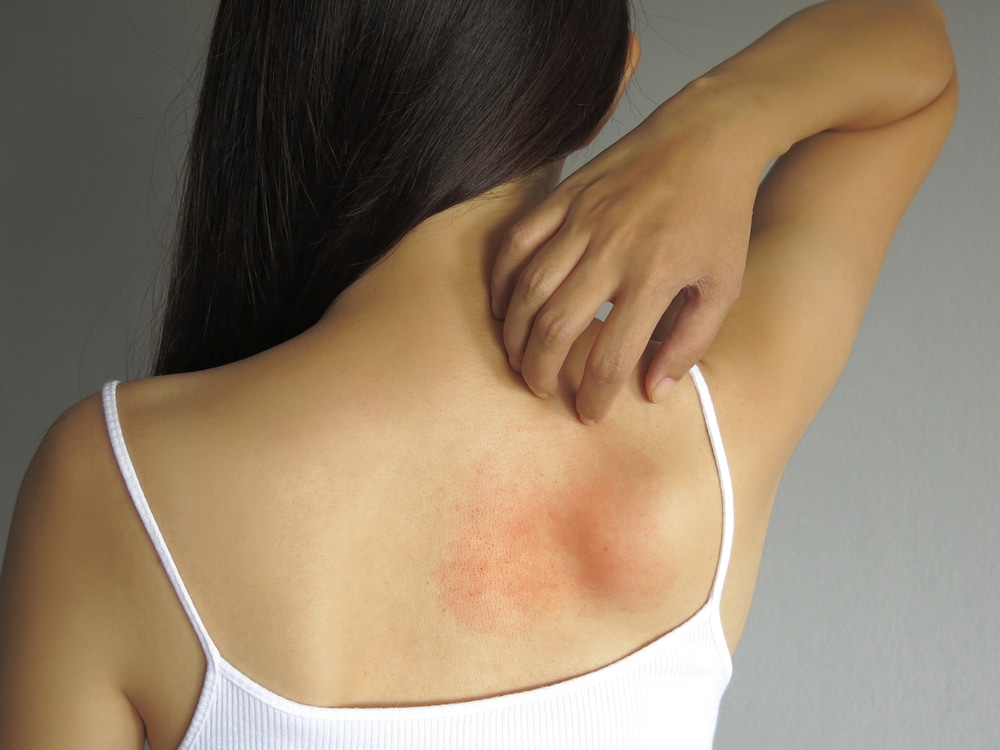When warm weather rolls around, it's only natural to spend more time outdoors doing the things you love. With all the activity and summer fun, your skin might be the last thing on your mind. That is, until you notice a rash after a day in the sun. It doesn't quite seem like a sunburn, so what is it?
You might be looking at sun poisoning or heat rash. These conditions have some overlapping features, which can make them hard to tell apart. Read on to learn about heat rash vs. sun poisoning, including how to identify them and what to do next.
Causes of Heat Rash vs. Sun Poisoning
The sun can play a role in heat rash and sun poisoning, but they have separate risk factors.
Heat Rash
When you think of heat rash, infants may come to mind. But this bothersome skin rash can affect people of all ages. Heat rash—also called prickly heat or miliaria—happens when your sweat glands become blocked. When sweat can't escape, it gets trapped in the skin, which can lead to inflammation and an uncomfortable, sometimes itchy rash.
Hot and humid weather commonly causes heat rash. Other causes include intense sweating, overheating, and wearing tight or synthetic, non-breathable clothing.
Sun Poisoning
Sun poisoning is a severe reaction to ultraviolet (UV) light. Despite its name, it isn't actually a form of poisoning. It's often described as a severe sunburn with additional symptoms like fever, chills, dehydration, and headache.
Sun poisoning results from prolonged UV exposure without adequate sun protection. You can get sun poisoning from the sun or a tanning bed. Anyone can get sun poisoning, but people with fair skin, babies and young children, and people with conditions or medications that make their skin more sun-sensitive are at higher risk.
Symptoms of Heat Rash vs. Sun Poisoning
Understanding the symptoms of heat rash and sun poisoning can help you tell them apart.
Heat Rash
Heat rash can appear anywhere on the body, but it's most common in skin folds and areas where clothing rubs against the skin, like the chest, back, and neck. Depending on the type of heat rash, you may notice tiny bumps or blisters filled with clear fluid or pus. In fairer skin, the bumps are red; in darker skin tones, they may appear dark red, purple, gray, or brown. Heat rash can feel itchy or prickly, and symptoms can start within minutes to hours after you begin sweating.
Sun Poisoning
Similar to sunburn, sun poisoning can cause redness, discomfort, and warmth in sun-exposed skin. However, sun poisoning symptoms are more severe and last longer. You may notice swelling or develop blisters of different sizes. You may also experience symptoms such as severe pain, fever, headache, nausea, or vomiting. Sun poisoning can start within hours to a few days after sun exposure.
Managing a Sun-Related Rash
Noticing a rash after a long, active day is never fun. If you find yourself in this situation, here's what to do next.
Heat Rash
If you develop heat rash, the first step is to get cool. Change out of your sweaty clothes and take a cool shower or colloidal oatmeal bath. After bathing, apply an over-the-counter 1 percent hydrocortisone cream or calamine lotion to help soothe the itch. To avoid further blocking your pores, stick to lightweight, noncomedogenic sunscreens and moisturizers.
Dress in loose cotton clothing, and stay in cool, well-ventilated environments as much as possible. Also, limit physical activity in heat and humidity to prevent heat rash from popping up again.
Sun Poisoning
If you think you're experiencing sun poisoning, get out of the sun right away. Take a cool shower or apply a cool compress to your skin. Stay hydrated by drinking plenty of fluids, and soothe the skin with aloe vera gel or a gentle, fragrance-free moisturizer.
You can typically manage mild sun poisoning at home. If you develop a fever, severe pain, nausea, vomiting, or widespread blisters, call your Dermatologist or other healthcare provider.
The Foundation of Beautiful Skin
Remember: the foundation of any solid skin care routine is daily broad-spectrum sunscreen with SPF 30 or higher. This simple habit can help prevent sunburn, sun poisoning, and skin cancer. Choose a sunscreen formulated with antioxidants like EltaMD UV Clear Broad-Spectrum SPF 46 to diminish visible signs of skin aging, and try a tinted sunscreen for added blue light protection. Round out your skin-health strategy by seeking shade and using sun-protective clothing. Your healthiest, most vibrant skin is within reach.

